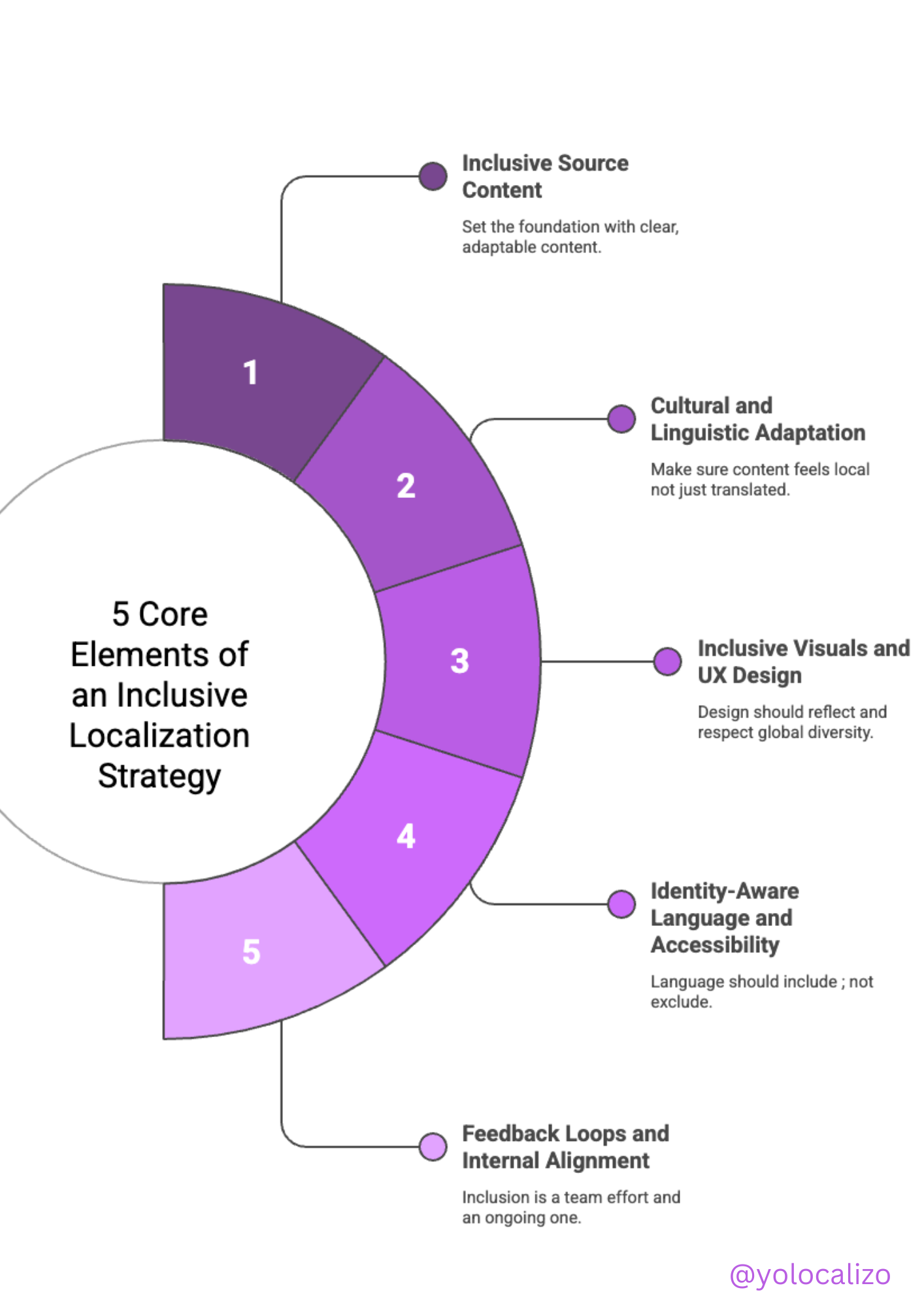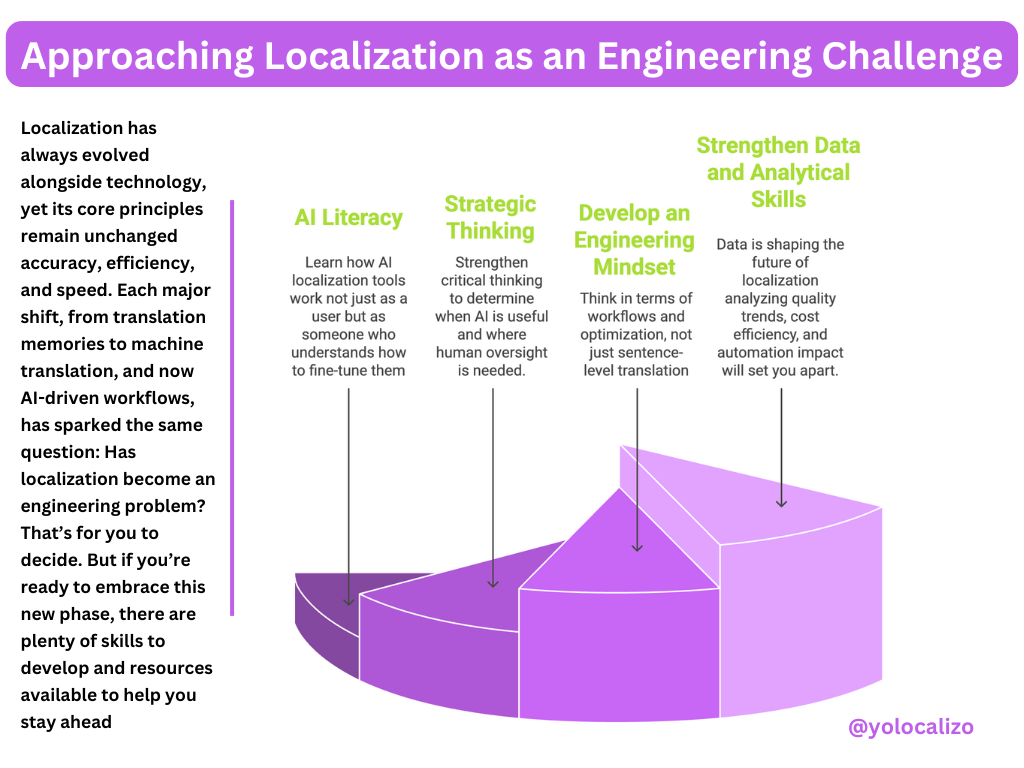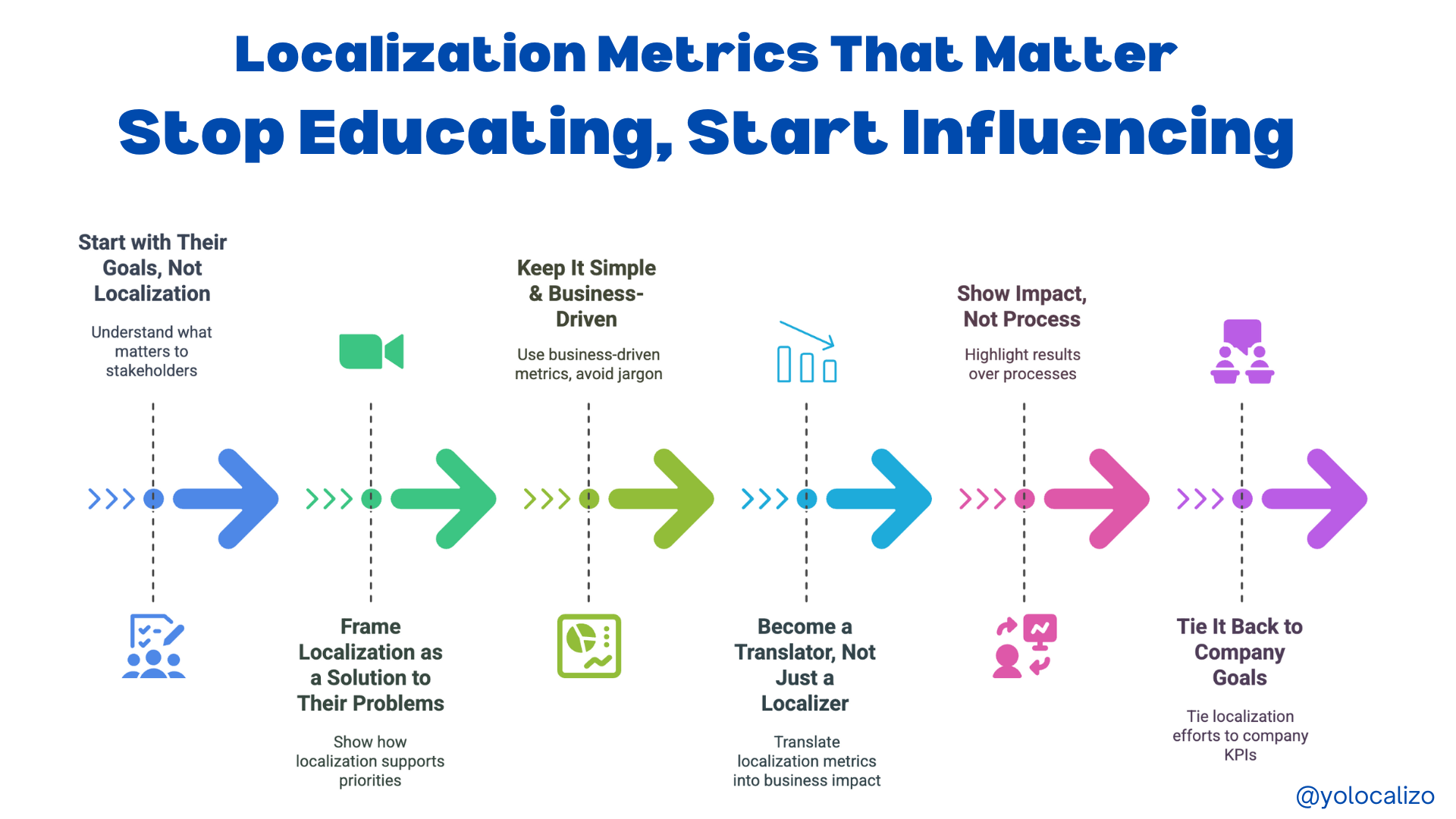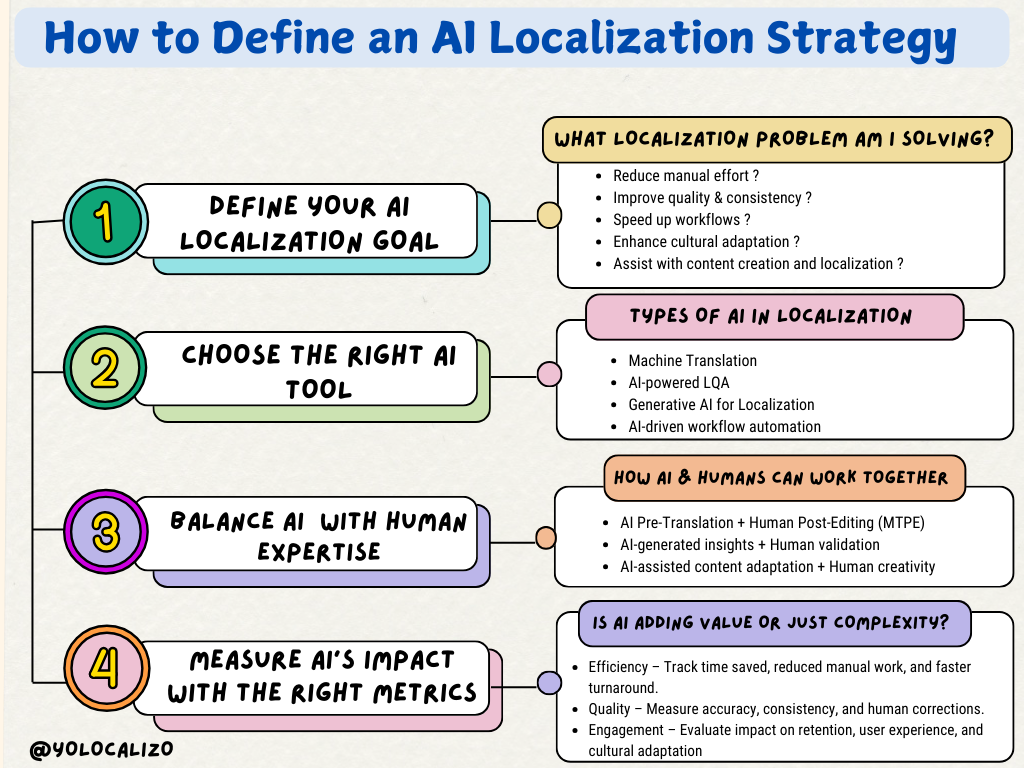New AI models are launching every week, how do we keep up without losing our minds?
The pressure to adopt AI is real. New tools, models, and features are being released at an incredible pace; there’s something new every week, sometimes multiple days in the same week. It’s easy to feel like we need to chase every update just to keep up. But the real challenge isn’t just about adopting AI; it’s about designing a strategy that makes sense (and helps us keep sane!).
How do we filter out the noise and focus on what truly adds value? How do we integrate AI in a way that enhances localization without overwhelming teams or creating unnecessary chaos? A solid strategy means aligning goals, preparing teams, and setting a realistic work plan; AI adoption can lead to burnout, false hope, or even chaos instead of meaningful progress without these key ingredients.
When it comes to business strategy, I like to read books on the subject, and it was in that context that I found the model in this infographic that I’ve adapted below. In it, Michael Hay talks about what needs to happen for the pressure for change, especially during paradigm shifts, to lead to success. Michael is a management consultant and strategist known for his work in organizational change and strategic development. He has contributed to frameworks used in business strategy, helping companies adapt to change and build effective strategies. He’s associated with Strategy&, and his work has been influential across industries. His ideas are credited in the book *A Beautiful Constraint* (which is where I found this inspiring graphic).
With the rapid advancement of AI technology, there is an urgent need for change across industries, and localization is no different from ours.
While many organizations, teams, and individuals are excited about AI’s potential, it’s essential to approach this shift strategically. Drawing inspiration from Hay’s work, we can apply a framework to ensure successful change in localization strategies. And that’s what this post is about. Keep reading, and I’ll explain how.
1. Pressure for Change: The AI Disruption
As we like saying (and we’ve been repeating so many times!) Localization is not just about translating content; it’s about creating meaningful, culturally relevant experiences. With AI’s rise, there’s immense pressure on localization teams to keep pace, adopt new technologies, and improve efficiency. However, this transformation may stall without clear business cases and a sense of urgency. The pressure from AI’s capabilities, content generation, automation, and personalization is building, and businesses that don’t adapt could risk falling behind.
This framework helps illustrate how different combinations of these elements can lead to success or failure in AI-driven localization.
Click HERE to download this infographic
Case in Point:
Think of AI-driven tools like GPT models, which generate content across languages at an unprecedented scale. Localization teams must harness this power, but first, they need pressure from leadership or the market to drive the adoption of these AI advancements.
2. Shared Vision: Aligning Localization Goals with AI
A shared vision is crucial. Every stakeholder involved in localization needs to align on the future state, whether that’s improved accuracy, shorter time-to-market, or new levels of personalization. The introduction of AI tools must complement, not compromise, the ultimate goal of creating culturally resonant experiences.
Challenge:
Without a unified understanding of how AI fits into localization, teams may end up pulling in different directions, leading to inefficiencies or even chaos. Therefore, the vision must include AI as a tool, not a solution on its own.
3. Ability to Implement: Preparing the Localization Team
AI provides incredible new capabilities, but organizations must assess whether their teams are ready to use these tools effectively. It’s essential to ensure that localization teams have the right skills, tools, and mindset to navigate this technological shift.
Key Question
Do localization specialists have the capacity to understand and adapt to AI-powered tools, or are they overwhelmed by their complexity? Training and support are key to developing the ability to execute this vision.
4. Realistic Work Plan: Phased AI Localization Strategy
Finally, we need a realistic work plan with clear timelines, milestones, and achievable goals. Rushing into AI localization without a structured approach can lead to chaos, as illustrated in the chart. We must set realistic expectations for what AI can achieve in the short, medium, and long term.
Example Approach:
Start by integrating AI into more automated tasks, such as translating low-impact content (like FAQs), and gradually scale to more complex uses, such as AI-assisted content review. Localization teams should be equipped to monitor and improve quality through consistent feedback loops.
Summary
In conclusion, just like when I first discovered the internet and felt the world was about to change, I feel the same way now. We find ourselves at a similar turning point with the rise of AI, LLMs, and GPT in our industry. I believe staying curious and open-minded will be crucial, but it’s also very important to plan what we’re going to do and how we’ll do it. As we’ve seen in the infographic that accompanies this post, missing any of the key ingredients described will have a significant impact on the rest of our efforts. So, 'slow and steady' could be a fitting slogan for the phase we’re entering.










Localizability has always been a challenge small issues in source content often lead to big problems later in translation. In this post, I explore how AI is giving localization teams a powerful new way to improve source quality, reduce friction, and create better content for every market right from the start.